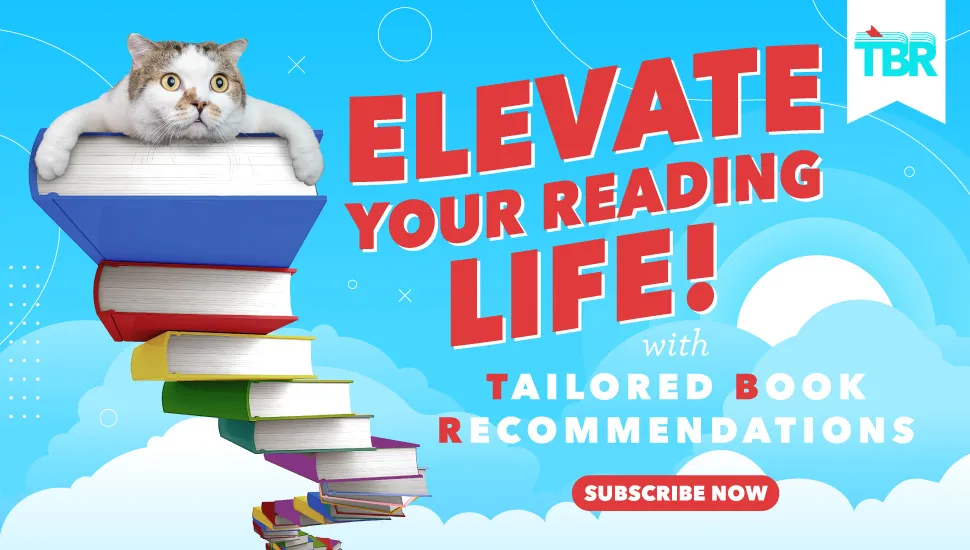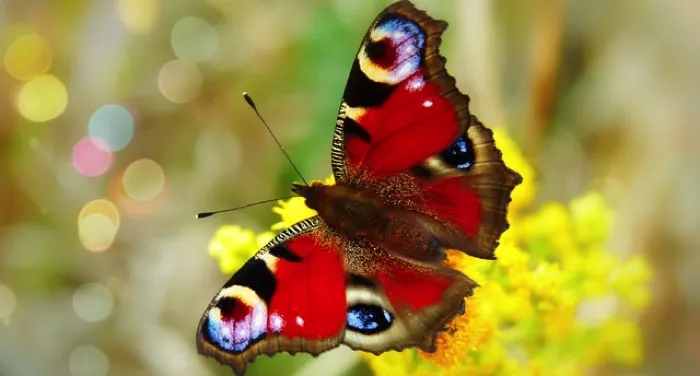
8 of The Best Creepy Crawly Picture Books
I’ve been down a bit of a rabbit hole of picture books about bugs recently. You might think that “down a rabbit hole” is the wrong metaphor, but did you know that some bumble bees actually lay eggs in abandoned rodent holes, like those created by rabbits?
See? Rabbit hole.
I started down this path when I heard the story of the Bell Bowl Prairie, an ancient gravel prairie outside of Rockford, Illinois. The Bell Bowl Prairie is one of only a few acres of gravel prairie left in the state, even the country. The Bell Bowl Prairie is in danger of being bulldozed to expand an airport to make room for Amazon deliveries. Indeed, by the time this article is published, the demolition may have already begun.
While activists have been trying to stop the demolition for months, one of their best chances for staying the demolition came in the form of a tiny bumblebee: the rusty patched bumblebee, to be exact. The rusty patched bumblebee was the first bee to be added to the endangered species list in the U.S., and since the queens overwinter in underground burrows, the demolition was delayed to give the bees a chance to wake up and find other places to nest.
(How the construction crews and local government plan to let the rusty patched bumblebees know that they shouldn’t lay eggs in the Bell Bowl Prairie this year is as much a mystery to me as it is to you.)
I had to know more about this tiny bee who was able to stay Amazon’s progress, even if just for a little while. I read an overview from the Xerces Society and scrolled through scholarly articles. I checked out books about native American bees from the library, and flipped through books about bees worldwide. But the very best resource I found for learning a lot about the rusty patched bumblebee quite quickly was Begin with a Bee, a poetic picture book from a trio of award-winning children’s book authors. It gave me an overview of the bee’s lifecycle and habitats and gave me a bibliography to do further research.
I do think that now would be a good moment to say that I work in children’s books, and I don’t typically run to picture books as the best source of information, but that doesn’t mean they can’t be a resource. And, of course, if you do happen to have picture book readers in your household, picture books are a great way to teach basics. Who knows, maybe you’re raising a future prairie-fate decision-maker, and a well-timed picture book about a bumblebee might make all the difference. Besides, you never know what picture book might send you down your next rabbit hole.
Below, I’ve listed some of my favorite picture books about creepy crawlies. They’re not all strictly educational, but they’re all excellent.
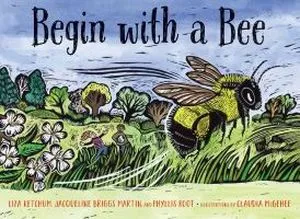
Begin with a Bee by Phyllis Root, Liza Ketchum, Jaqueline Briggs Martin, Illustrated by Claudia McGee
This is the story of the entire rusty patched bumblebee hive, but told through just one bee. Root, Ketchum, and Martin are veteran picture book writers, and they all worked together to create this gentle story of a queen bee, from the moment she wakes in the spring, to the moment she gives up her wee bee ghost, and beyond. It includes helpful backmatter if you’d like to learn more about native U.S. bees and how you can help them.
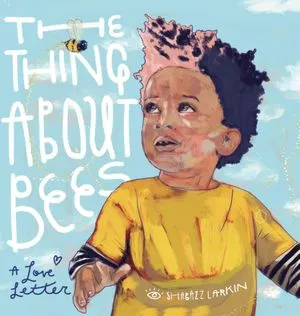
The Thing About Bees written and illustrated by Shabazz Larkin
Larkin was terrified of bees, so he decided to learn all he could about them in order to quell his fears. And so, The Thing About Bees was born. It’s another poem, but instead of explaining the lifecycle of bees, it gives them a personality. It makes them relatable. The illustrations are outstanding: his characters have big personalities and he combines pen and ink drawings with painterly backgrounds. They’re stunning. Larkin begins his book with a spread that explains pollination and ends it with a chart that ranks bees from “kind” to “kinda mean” so kids can learn how not to get stung.
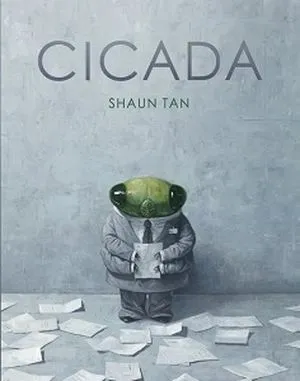
Cicada written and illustrated by Shaun Tan
I have to say, this is one of the oddest picture books I’ve ever encountered, and I wasn’t terribly surprised to see that it’s for the 12 and up crowd, even though it’s a picture book’s typical 32 pages. I had to include it. Cicada works all day long at a bleak office building doing thankless work. He’s been working for 17 years and no one appreciates him. He narrates his own story in clipped, incomplete sentences. One day, everything changes. Listen, it’s a weird story, but I love the idea of cicadas not just deep in dirt for 17 years, but instead buried in an office building.
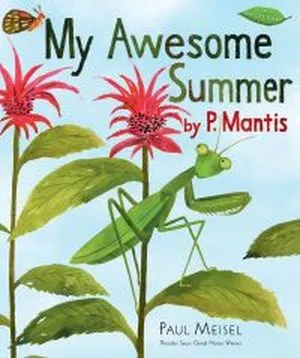
My Awesome Summer by P. Mantis written and illustrated by Paul Meisel
This is another picture book told in first insect, but it leans more silly than bizarre. I was impressed by the way Meisel was able to fit the entire lifecycle of a preying mantis into a journal format. I also love these illustrations: so many times flowers are just colorful blobs, but Meisel paints recognizable garden flowers and shows them blooming in the background of their proper seasons. P. Mantis is a friendly guide through her life, from beginning to end.

It Fell From the Sky written and illustrated by The Fan Brothers
This is another fantasy story, but I don’t think that makes it any less valuable. The Fan Brothers create marvelous worlds, and their detailed illustrations and charming characters are a perfect way to inspire wonder in the minds of little ones. When something amazing falls from the sky, the lives of all the insects in town are changed forever.
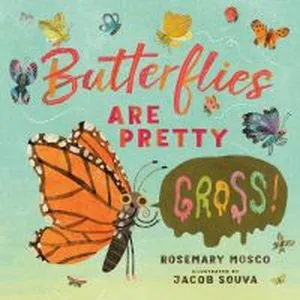
Butterflies are Pretty Gross by Rosemary Moscoe, illustrated by Jacob Souva
Ahhh, the beautiful butterfly. See it flit through the fields. See it drink tears! (?) Eats poop! (???) See it (checks notes) have a butthead????? Let Rosemary Mosco teach you all sorts of weird and wonderful things that you’d never expect in her charming (I promise it is!) picture book all about butterflies and moths.
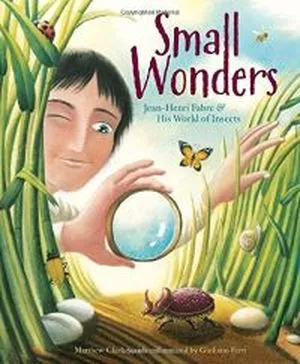
Small Wonders by Matthew Clark Smith, illustrated by Giuliano Ferri
I thought it would be a good idea to include one book about someone who studied insects. Small Wonders is written like a perfect fairy tale: it begins with an odd little man with beetle-black eyes who lives in a pink house on the edge of town, and then works backwards to tell the story of Jean-Henri Fabre. Fabre was fascinated by insects, and dedicated his life to writing about them in a way that would cause others to be fascinated. It’s a lovely book, and is sure to inspire the little naturalists in your life.
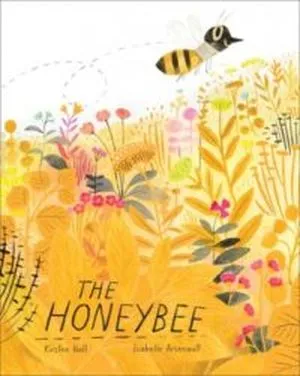
The Honeybee by Kristin Hall and Isabell Arsenault
And now, we’ll end with a bee. Did you know honeybees aren’t native to the U.S.? Bumblebees are native, honeybees were introduced. But that doesn’t mean honeybees aren’t valuable! I love this simple bee poem. Hall is able to teach her readers all about the honey-making process with bouncing rhymes, and Arsenault injects so much personality into their hive.
I hope you’ve been inspired to learn a little more about the world around you through these picture books about bugs. Want to read more nature picture books? Check out these lists! Want to encourage the budding environmentalists in your life? Here are some perfect books for you.












